How Often to Post on Social Media: Data-Backed Tips and Insights
Wondering how often to post on social media to optimize your marketing efforts? Here's a data-backed guide covering best practices and brands' posting patterns.


For social media managers, figuring out the right posting frequency is still an ongoing challenge. Post too often, and engagement drops. Post too little, and you risk being forgotten. Every platform has different algorithms and audience behaviors, so there’s no one-size-fits-all effective social media strategy.
But digging into social media benchmarks indicating how brands are handling social media marketing these days and getting insights about their approaches and performance certainly offers a great starting point in identifying what to try and what to avoid.
This platform-wise guide will help you determine how often to post on social media and improve your social media marketing game. Let’s dive in!
Key takeaways
- On TikTok brands post on average 3 times per week and integrating more carousels can generate higher engagement.
- On Instagram brands post on average 5 times per week and constent diversity is likely to ensure a better performance.
- On Facebook brands post between 7 and 10 times per week (during holiday campaigns), while on Twitter brands exceed the 10 posts per week benchmark.
How often should brands post on social media?
Finding the right posting frequency on social media is an essential part of any effective social media strategy.
As discovered when digging into the data for our 2025 social media benchmarks study, brands follow these posting patterns for different social platforms:
- TikTok: 15 posts per month;
- Instagram: 20 posts per month;
- Facebook: 47 posts per month;
- Twitter: 50 posts per month.
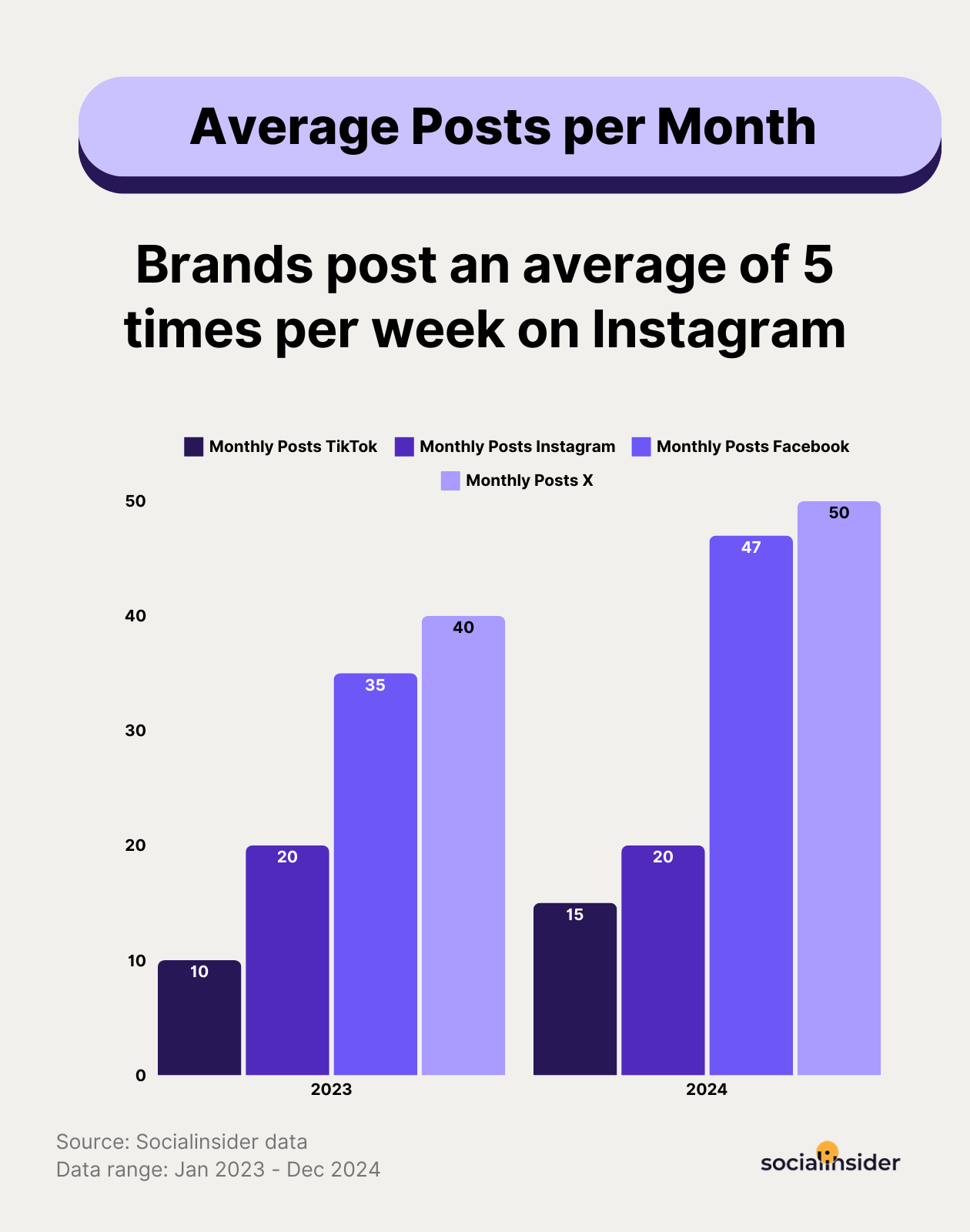
These numbers provide a guideline, but ultimately, the best frequency for your brand depends on audience behavior and industry.
If you were wondering how often a business should post on social media, we'd advise you to use these benchmarks as a starting point and adjust based on performance analytics.
How often to post on TikTok?
TikTok’s fast-paced algorithm rewards both consistent and creative social media content. Brands post an average of two times per week, adding up to around 8 posts per month.
However, the key isn’t just frequency—it’s about posting high-quality, engaging content that resonates with your audience.
Unlike other platforms, TikTok prioritizes content discovery over follower-based distribution. This means that even if you don’t post daily, well-optimized content can still reach a massive audience.
Testing different content formats and analyzing performance metrics is essential to fine-tune your social media posting calendar for TikTok.
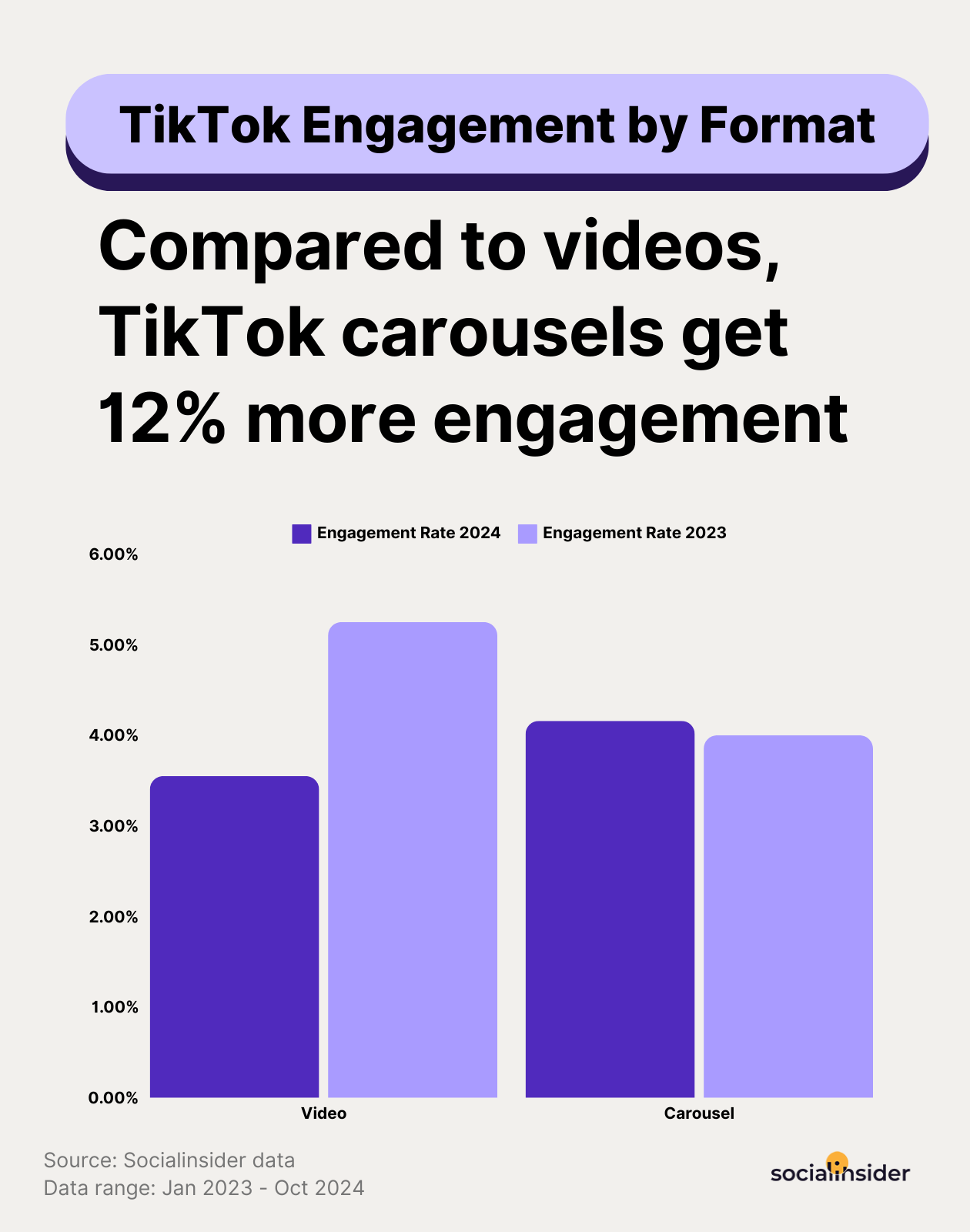
With TikTok carousels outperforming videos, brands should incorporate this format into their TikTok marketing strategy.
Carousels encourage users to spend more time engaging with a post, which signals positive performance to TikTok’s algorithm.
Maintaining an optimal TikTok posting frequency while leveraging a mix of carousels, trending sounds, and engaging storytelling can help maximize reach, putting your brand on the map.
Thus, discovering social media best practices and adjusting your strategy based on your analytics' insights is your train ticket to social media success.
How often to post on Instagram?
When determining your social media posting frequency, it's essential to strike a balance between consistency and engagement. Based on industry data, brands typically post an average of five times per week on Instagram.
According to our Instagram benchmarks study, brands ensure content diversity by following this strategy:
- 10 images per month (50% of their content)
- 4 carousels per month (20%)
- 6 Reels per month (30%)
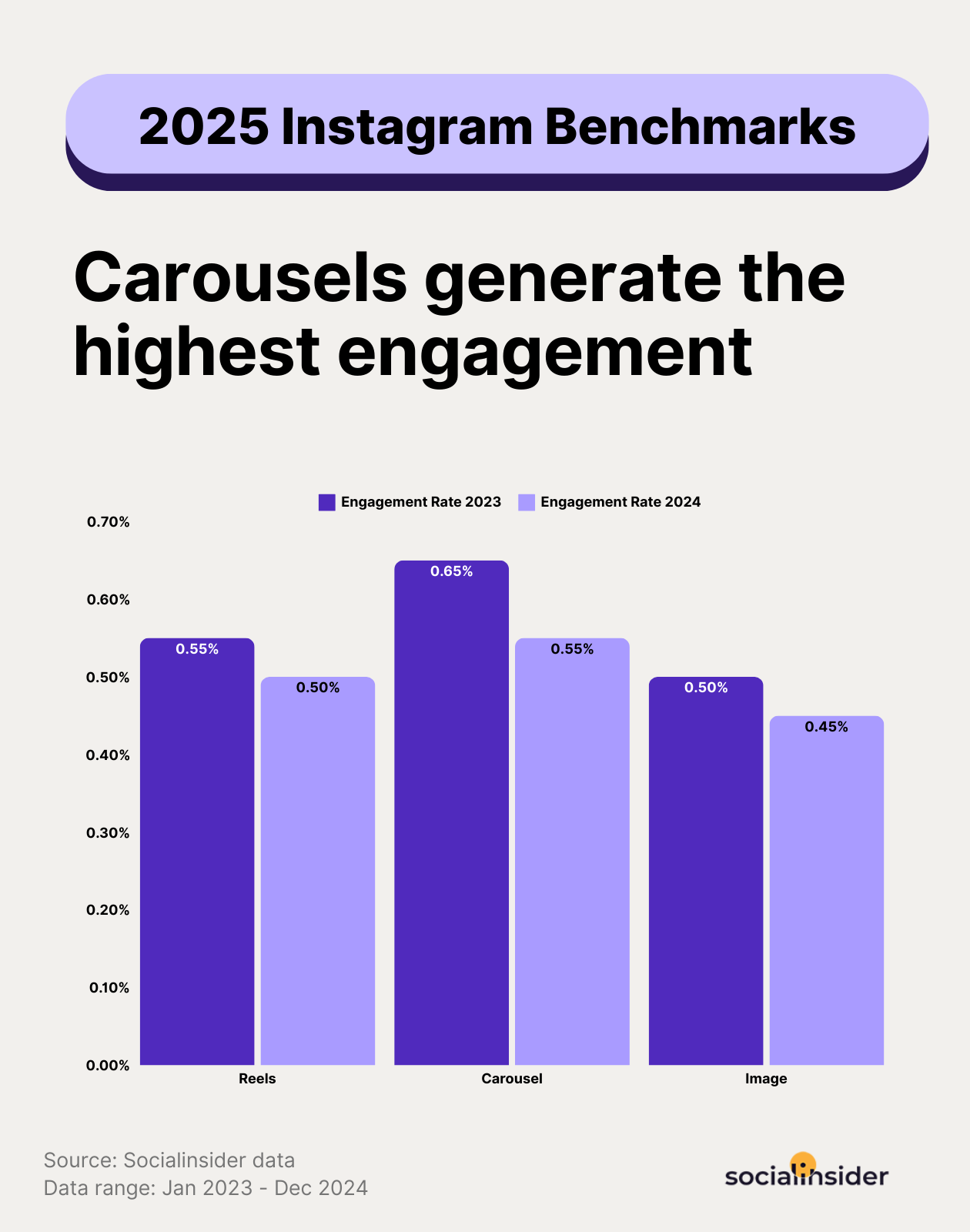
While brands maintain a mix of content types, carousels emerge as the best-performing format, driving higher engagement than standalone images or Reels.
However, if you're wondering how often you should post Reels on Instagram, the data suggests posting around six Reels per month to maintain visibility and engagement.
How often to post on Facebook?
Finding the right Facebook posting frequency for your Facebook marketing strategy is vital for maintaining audience engagement while avoiding content fatigue.
Based on data, brands post at least 7 times per week, which translates to at least 30 posts per month.
Of course, in the case of brands investing heavily in holiday campaigns such as Black Friday, Valentine's Day, or Christmas, this number can significantly increase, reaching up to 47 per month during busy seasons.
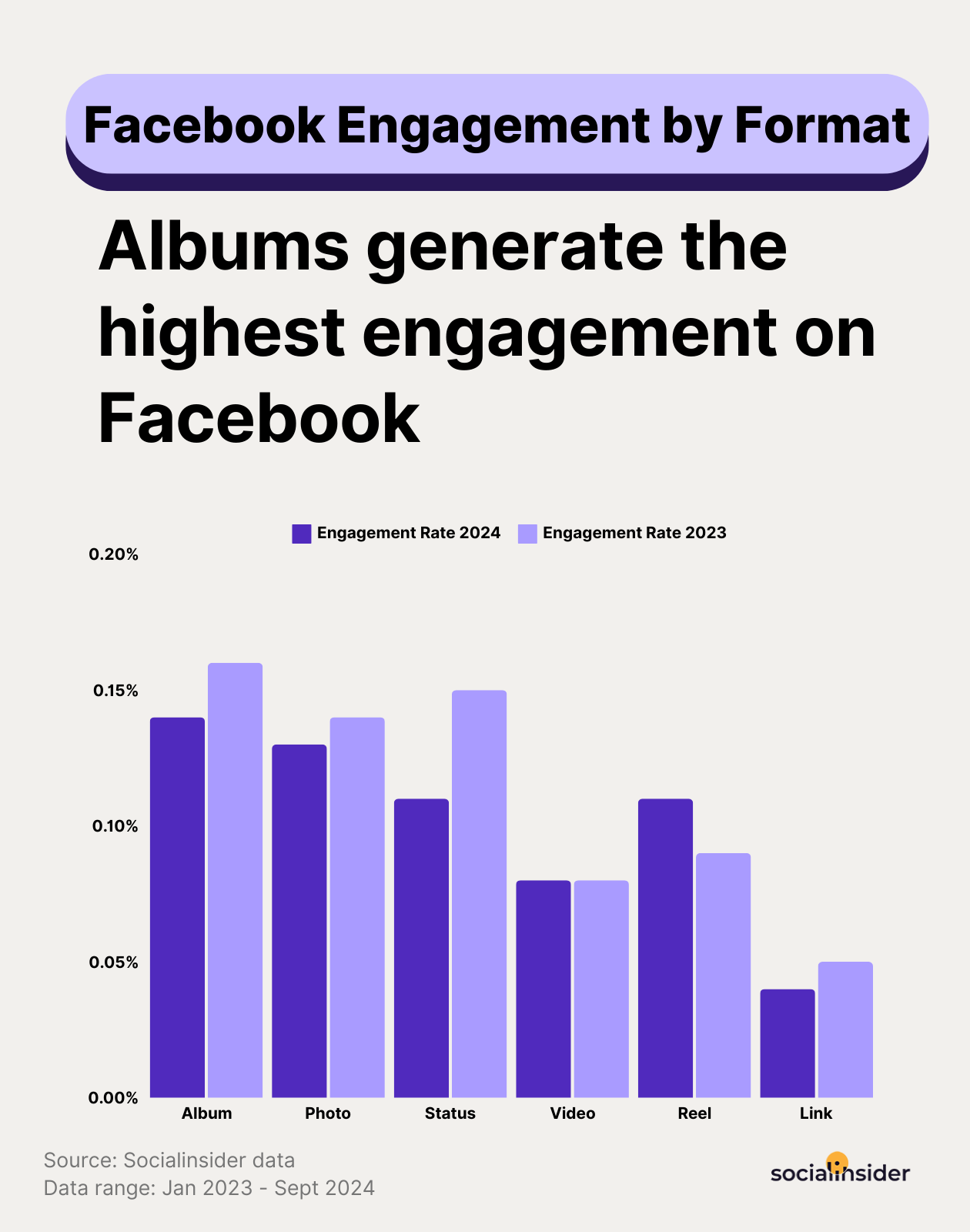
While consistency is important, how often should you post on Facebook depends on your audience’s preferences and content performance. Over-posting can reduce engagement, while under-posting can make your brand less visible in the feed.
One of the top-performing content types on Facebook is albums. Instead of relying heavily on single-image posts, brands should leverage more albums and showcase multiple visuals in one post, encouraging users to interact more.
Including a mix of albums, videos, and engaging text-based posts in your Facebook posting frequency strategy can help boost organic reach and engagement.
To get a satisfying answer to your question about how often to post on Facebook, use this posts per week benchmark as a starting point and analyze engagement trends to refine your strategy over time.
How often to post on Twitter/X?
When it comes to posting on social media, Twitter/X demands a higher frequency due to its fast-moving feed.
Based on data, brands post an average of 10+ times per week, translating to at least 50 posts per month.
The platform thrives on real-time engagement, so how often should you post on social media—especially on Twitter/X—depends on your ability to stay relevant and interact with trending topics.
Unlike other platforms, multiple daily posts won’t overwhelm your audience; instead, they increase visibility and engagement.
For brands, a well-structured posting frequency should include a mix of tweets, retweets, replies, and multimedia content like images, videos, and polls.
Maintaining a consistent posting strategy while engaging in conversations can help maximize reach and brand awareness on Twitter/X.
Tips for an effective posting strategy
Crafting a successful social media posting strategy is not just about how often you post but also about what you post, when you post, and how well you engage with your audience.
While many brands struggle with finding the right balance between posting frequency and content quality, a well-planned approach can maximize engagement and improve overall brand presence.
A solid social media strategy should include:
- Understanding your audience's behavior;
- Testing and adjusting based on data;
- Maintaining consistency;
- Creating high-quality content;
- Repurposing successful content;
- Analyzing competitors' posting strategies.
Below, we break down each of these elements with actionable insights and recommendations.
Know your audience
Understanding who your audience is and how they consume content is the first step to building an effective social media posting calendar. Each audience behaves differently depending on their demographics, interests, and online habits.
How to identify your target audience
- Create buyer personas: Define their age, location, interests, job roles, and preferred social media platforms.
- Analyze audience insights: Platforms like Facebook, Instagram, LinkedIn, and Twitter/X offer audience insights that reveal follower demographics and engagement patterns.
- Track competitors’ audiences: Tools like Socialinsider can help analyze competitors’ audience behavior.
Audience behavior and posting frequency
The best social media posting frequency depends on your industry and audience preferences. For example:
- A B2B brand may find higher engagement during weekday mornings, as professionals scroll through LinkedIn and Twitter/X during work hours.
- A travel brand may experience higher engagement in the second half of the week, when people start planning weekend trips.
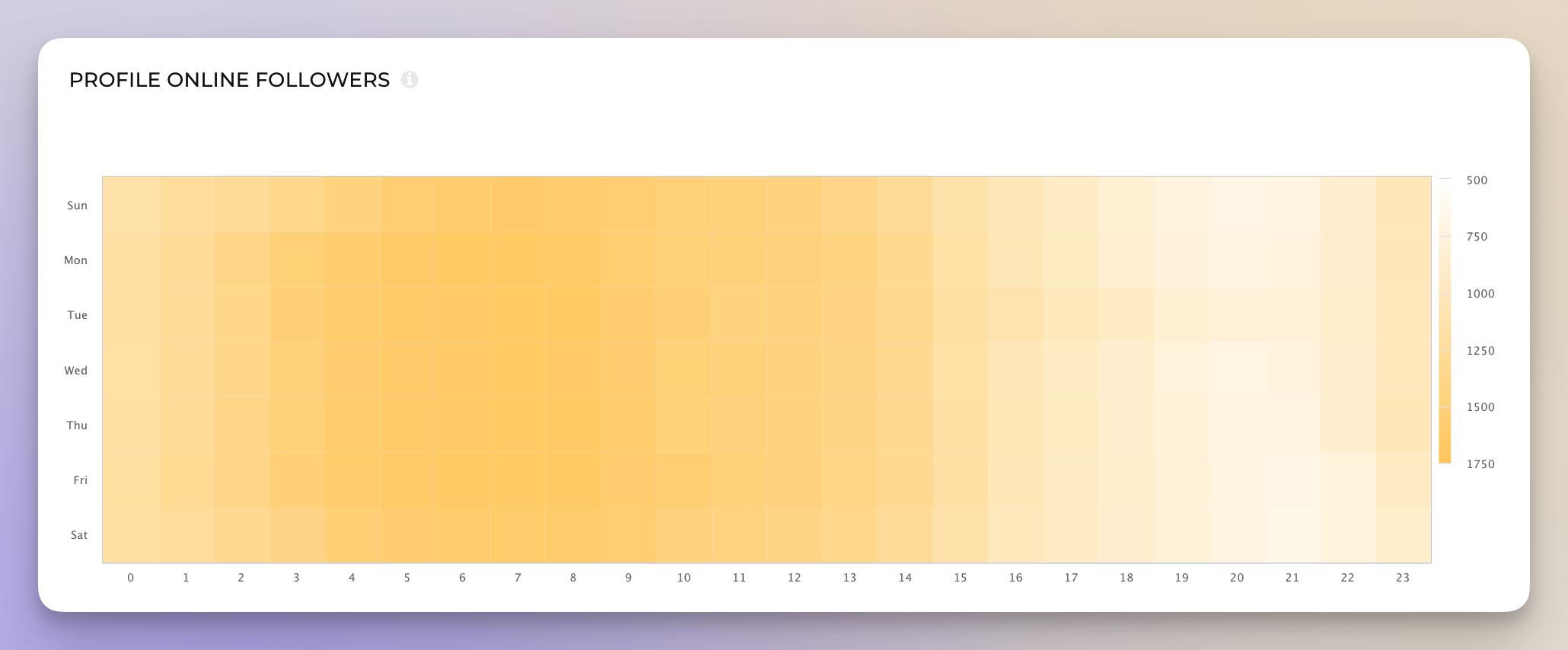
Key takeaway: Analyzing your audience’s habits allows you to post at optimal times, improving engagement without overposting.
Test and adjust
There is no universal answer to how often should you post on social media—every brand and audience is different. The best way to determine the right frequency is through continuous testing and refinement.
How to test your posting frequency
- Start with social media benchmarks: Use industry data as a reference for how many posts per week perform best.
- Experiment with different frequencies: Post more or less frequently for a few weeks and compare engagement levels.
- Analyze performance metrics: Track likes, shares, comments, and click-through rates to see if increasing or decreasing your posts impacts engagement.
- Adjust your strategy: If engagement drops, you may be posting too frequently. If reach is low, you may not be posting enough.
Be consistent
Consistency is key to maintaining brand presence and engagement on social media. Sporadic posting can cause your audience to forget about your brand, while frequent and predictable posting builds trust.
How to maintain consistency
- Use a social media posting calendar: Plan posts in advance to ensure content is published regularly.
- Schedule posts ahead of time: Use social media scheduling tools to automate posting.
- Stick to a content schedule: Whether you post daily, three times a week, or weekly, make sure to follow a structured plan.
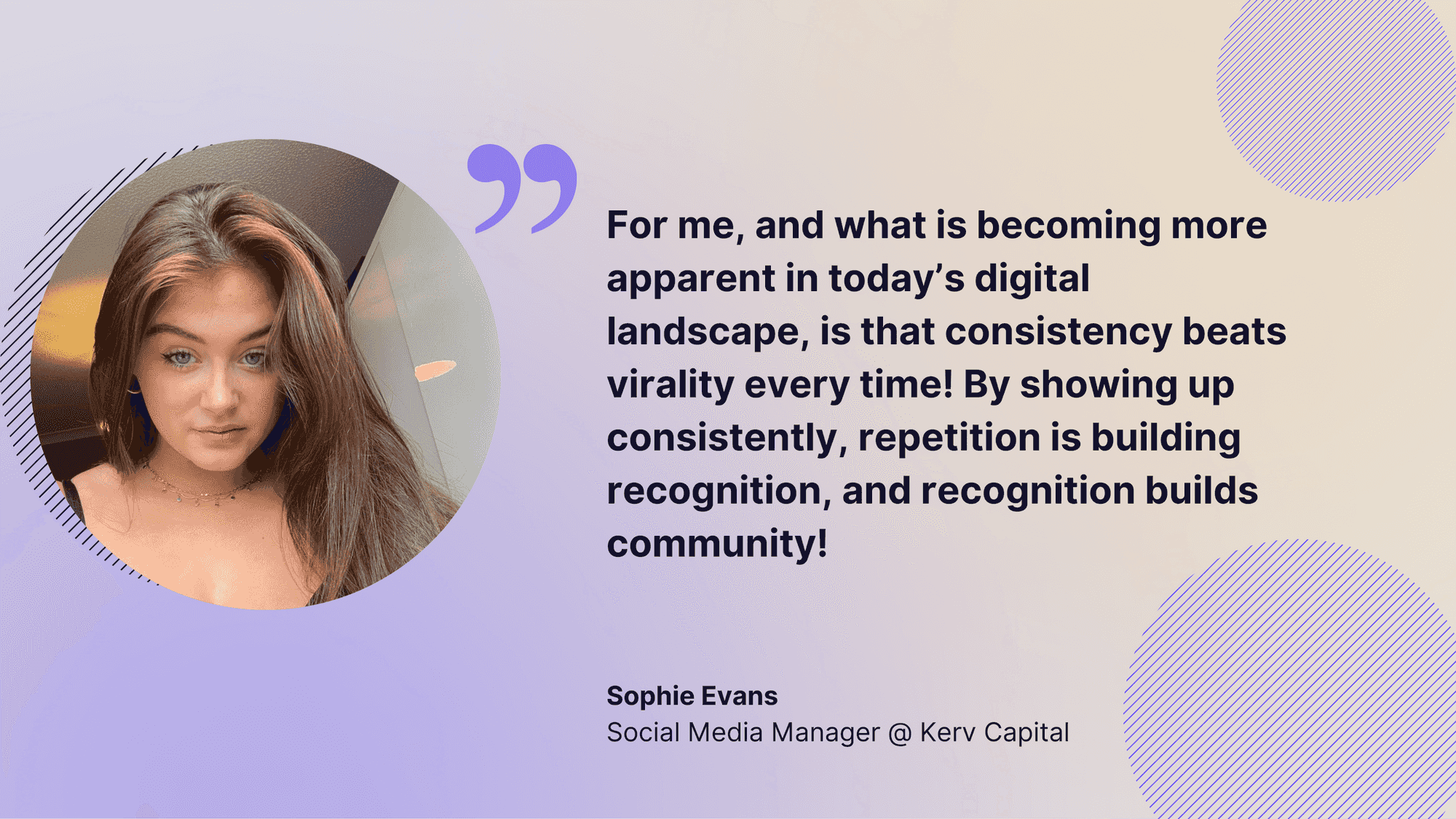
Create high-quality content
Posting frequently isn’t enough if your content isn’t valuable. Platforms like Instagram, Facebook, and LinkedIn prioritize content that generates meaningful interactions.
High-quality content builds brand credibility, encourages audience engagement, and strengthens relationships with potential customers.
Elements of high-quality content
- Educational: Provides actionable tips, in-depth guides, or industry insights that help the audience solve problems.
- Entertaining: Incorporates humor, storytelling, or compelling narratives that captivate viewers.
- Inspirational: Shares success stories, motivational content, or aspirational ideas that resonate with audiences.
- Interactive: Encourages participation through polls, quizzes, challenges, or Q&A sessions.
Best practices for creating high-quality content
- Prioritize originality: Avoid copying competitors and focus on unique perspectives.
- Use eye-catching visuals: High-quality images, infographics, and videos improve engagement.
- Optimize for each platform: A LinkedIn audience may prefer thought-leadership posts, while Instagram users engage more with short-form video content.
- Ensure consistency in tone and messaging: Maintain a unified brand voice across all posts.
- Encourage audience participation: Invite users to comment, share, or react to your content to increase engagement.
Repurpose high-performing content
Repurposing content is a powerful way to boost reach with minimal effort and accelerate organic social media growth.
Instead of constantly creating new content, you can adapt and optimize your best-performing posts for different platforms, ensuring they reach a wider audience while maintaining consistency.
Strategies for approaching content repurposing
- Convert a blog article into an Instagram carousel or LinkedIn post.
- Turn a webinar into short-form videos for TikTok, Instagram Reels, and YouTube Shorts.
- Compile user-generated content into a Facebook album or Instagram Story highlights.
Spy on your competitors’ posting strategies
Analyzing your competitors' social media posting frequency can provide valuable social media insights into what works in your industry.
Key questions to ask:
- How often are they posting? Are they posting more or less than your brand?
- What content types perform best for them? Are carousels, videos, or text posts driving the most engagement?
- When do they post? Are there specific time slots that get higher engagement?
Using Socialinsider for competitive analysis
With Socialinsider’s Benchmarks feature, you can:
- Track how often competitors post per day, week, or month.
- Compare engagement rates and see if higher posting frequency leads to better results.
- Identify top-performing content formats.
- Analyze how competitors segment their strategy based on content pillars.

Step 1: Adding competitors to Socialinsider
- Log into Socialinsider.
- Navigate to the Benchmarks section.
- Enter competitor social media handles and select the platforms you want to track.
Step 2: Analyze posting frequency
- Check how many posts per week or month competitors publish.
- Compare their frequency with yours to identify gaps.
Step 3: Examine engagement metrics
- Review likes, shares, comments, and saves.
- Identify which posts receive the highest engagement.
Step 4: Identify top-performing content formats
- Analyze whether images, carousels, videos, or text posts perform best.
- Adjust your content mix accordingly.
Step 5: Dive into content pillars analysis
- Discover what are your competitor's best performing content pillars.
- Check if there are content pillar overlays to identify the most engaging themes at an industry level.
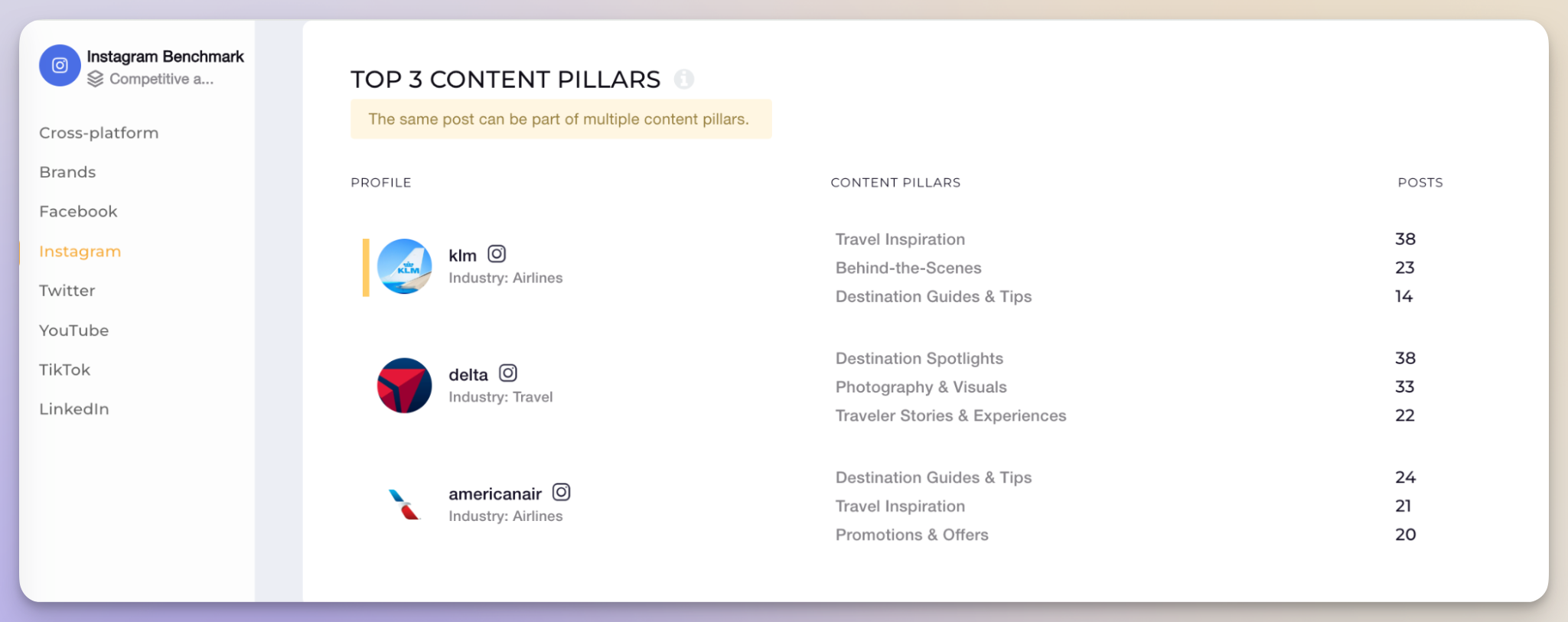
Final thoughts
An effective social media posting strategy isn’t just about how often you should post on social media—it’s about strategic consistency, content quality, audience engagement, and data-driven adjustments.
Using tools like Socialinsider allows brands to refine their social media posting calendar, analyze competitors, and optimize their posting frequency on social media for better engagement and visibility.
With the right balance of strategy, testing, and analysis, your brand can post smarter, not just more often, leading to stronger audience connections and long-term success.
Analyze your competitors in seconds
Track & analyze your competitors and get top social media metrics and more!
You might also like
Improve your social media strategy with Socialinsider!
Use in-depth data to measure your social accounts’ performance, analyze competitors, and gain insights to improve your strategy.




